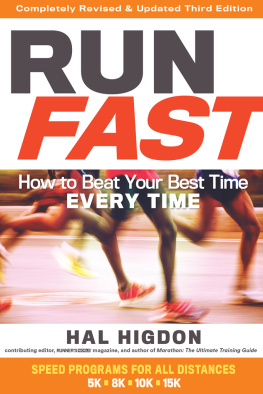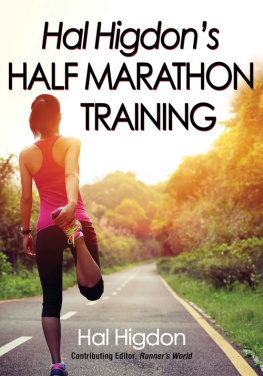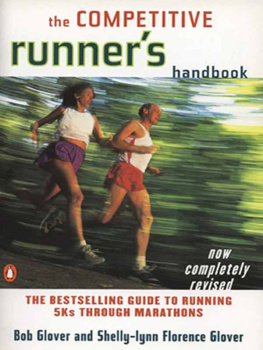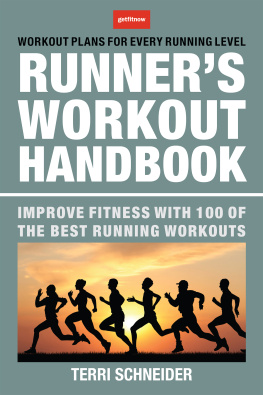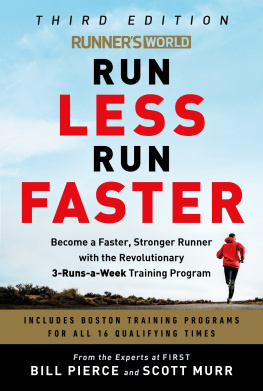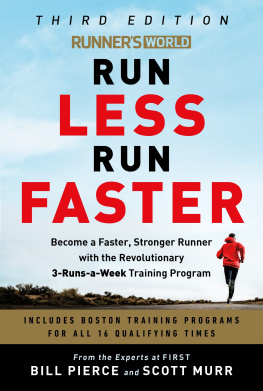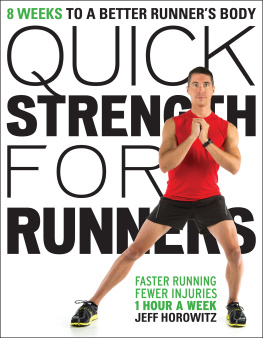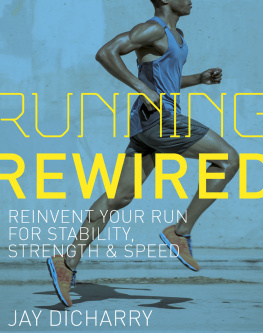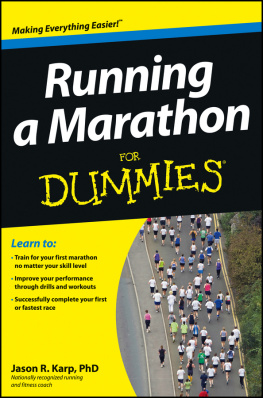Theres perhaps no clearer testament to the mans stay power than this: When you Google marathon training or half marathon training, Higdons is the first name that youll see.
Runners World, October 2015. Hal Higdon listed as a Guru in the 50 Most Influential People in Running
I ran my first marathon 15 years ago and like nearly every first-time marathoner I meet in my job, I used his marathon training plan. It is remarkable that no one has dethroned Mr. Higdon from the top spot.
Chris Heuisler, Westin Hotels national running concierge
Praise for Run Fast, 1st edition
Vintage Higdon. Hal brings perspective to his discussion and demonstrates every point with a story out of his own experience or that of many other runners, coaches, and scientists. A wealth of information.
David L. Costill, PhD, Ball State University
With Run Fast, Hal Higdon has put human into the science of human performance.
Russell R. Pate, PhD, University of South Carolina
Praise for Masters Running
Reaching 40 is not the end, but the beginning, for runners. In Masters Running, Hal Higdon not only tells them how to stay fit and improve performance, he inspires them to success.
David H. R. Pain, founder, masters movement
Hal Higdon has written the complete book of masters running. Nobody has done it better. A very readable book, but also one that offers the advice that every masters runner needs to know.
Al Sheahen, National Masters News
Clearly written, precisely focused, Masters Running is a typical Hal Higdon work. It will make you the best age-group running that you can be.
Amby Burfoot, editor-at-large, Runners World magazine and 1968 Boston Marathon champion
Praise for Marathon
Will get any runner across the finish line of a marathon. I highly recommend it.
-Frank Shorter, Olympic marathon gold medalist
Theres plenty of sound training advice here for runners of all levels.
-Ken Sparks, PhD, who achieved a marathon personal record of 2:28 at age 46
Praise for Hal Higdons Half Marathon Training
Hal Higdon, like a fine wine, just keeps getting better with age. Forget all the gadgets, stick with the advice from an expert. And with Hals decades of experience as an elite runner, coach, and writer, he stands among the top in the sport.
-Bob Glover, author of The Runners Handbook and The Competitive Runners Handbook and coach of the Greater New York Racing Team
Also by Hal Higdon
On the Run from Dogs and People
The Electronic Olympics
Fitness After Forty
Beginners Running Guide
Runners Cookbook
The Marathoners
The Masters Running Guide
Marathon: The Ultimate Training Guide
Boston: A Century of Running
Hal Higdons How to Train
Hal Higdons Smart Running
Run, Dogs, Run!
Marathoning A to Z
Masters Running
Marathon: A Novel
Through the Woods
4:09:43: Boston 2013 Through the Eyes of the Runners
Hal Higdons Half Marathon Training
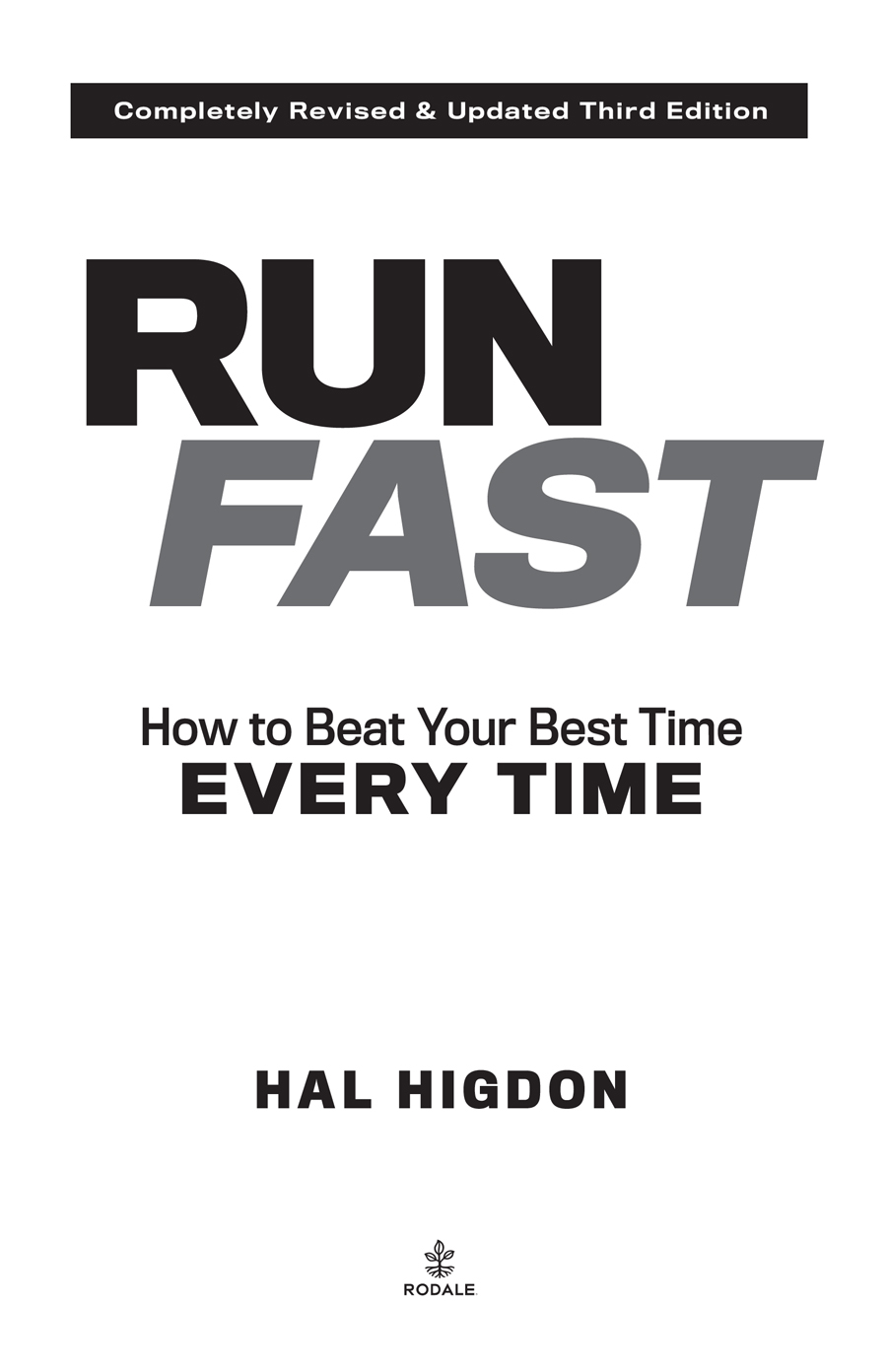
Mention of specific companies, organizations, or authorities in this book does not imply endorsement by the author or publisher, nor does mention of specific companies, organizations, or authorities imply that they endorse this book, its author, or the publisher.
Copyright 2016 by Hal Higdon
All rights reserved. No part of this publication may be reproduced or transmitted in any form or by any means, electronic or mechanical, including photocopying, recording, or any other information storage and retrieval system, without the written permission of the publisher.
Book design by Christina Gaugler
Dedication photograph Laura Evans
Library of Congress Cataloging-in-Publication Data is on file with the publisher.
ISBN: 9781623366889 paperback
ISBN: 9781623366896 e-book

We inspire health, healing, happiness, and love in the world.
Starting with you.
RodaleWellness.com
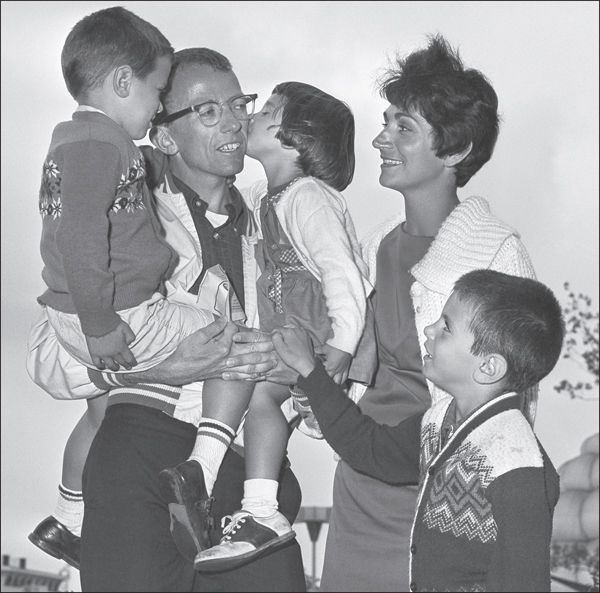
Dedicated to the five of us who were captured by a photographer for The New York Times after a race I won at the 1965 Worlds FairRose and I and our three children: Kevin, David, and Laura. Also dedicated to our nine grandchildren: Kyle, Wesley, Angela, Holly, Jake, Nick, Sophie, David, and Danny.
Celebrating also the 50th anniversary of Runners World and the half century we have spent together.
Hal Higdon

CONTENTS
INTRODUCTION
If you want to run fast, you have to run fast.
W hile writing the first edition of Run Fast, I talked to Lynn Jennings, who at the time was one of Americas fastest female runners. Jennings won the IAAF World Cross Country Championships three times between 1990 and 1992, and placed third in the 10,000 at the 1992 Olympic Games in Barcelona. When considering the simple, two-word title of my book, Jennings commented: If you want to run fast, you have to run fast.
There is a lot of truth to that remark, but if that was all that could be said about running fast, then you would not be holding this copy of a 200-plus page book in your hands. What made the first edition of Run Fast, published in 1992, and the second edition, published in 2000, bestsellers? Why am I able to boast that this third edition will enable you to improve as a runner at every distance from 5K to the marathon? Running fast is about more than heading out the door and simply picking up the pace of your daily workouts. The secret, as Jennings certainly knew, is achieving a balance of various elements that will ultimately teach you how to run fast, when to run fast, and how much fast running a structured program should include. What is my training program like if Im a novice runner? What if Im an experienced runner? Is there any room in a fast running program for slow running? Must a persons running life be dominated by speedwork day after grinding day? The answers to those training questions are at the heart and soul of this completely revised third edition of one of my most successful books.
So much has changed during the quarter century since the publication of the first edition of Run Fast. And yet so much remains the same. Humor me: Lets look backward to Training Past before we look forward to Training Future. To succeed in running during the final decade of the last century, elite athletes, Jenningss running peers, needed to run a lot of miles, most often in two-a-day workouts. Some of those miles could be slow (quantity counts), but many of those miles needed to be fast (quality counts even more). Speedwork a quarter century ago included interval training, repeats, sprints, strides, tempo runs, FCRs (fast continuous runs), and fartlek. Ill address each of those training methods later, but for now its enough to know that all these pieces were on the chessboard back in the 1990s. Most experienced runners knew how to train way back when, and they succeeded by applying basic training methods that were disseminated widely, particularly in the pages of

